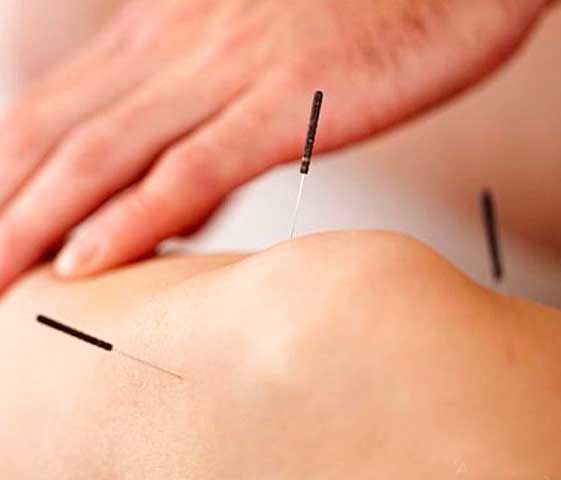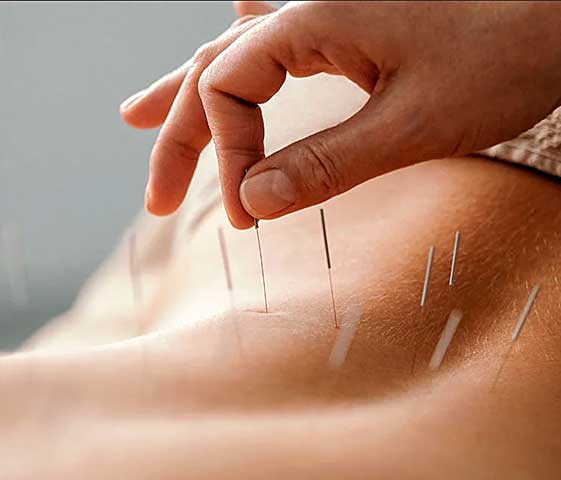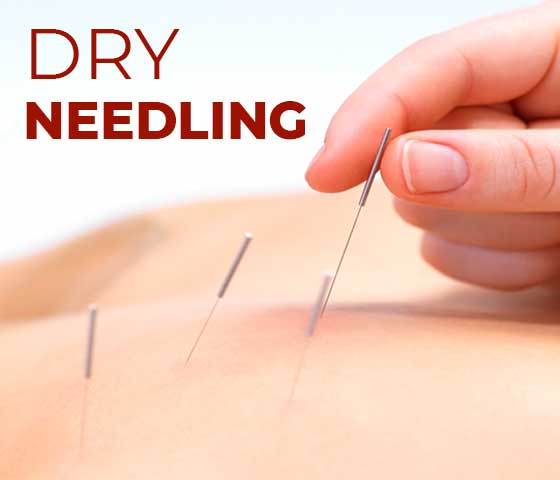Dry Needling is a treatment technique that involves inserting thin needles into the skin at specific points on the body, known as trigger points. The needles are inserted without injecting any substances, hence the name “dry” needling. The technique is used to release muscle tension, reduce pain, and improve mobility in areas such as the neck, shoulders, and lower back.

Often used in conjunction with other physical therapy techniques, such as massage and stretching. At Revolve Physiotherapy in Milton, our team of registered physiotherapists will help you to reduce pain and muscle tension, while simultaneously improving mobility.
The primary goals of dry needling are to:
Release Trigger Points: Trigger points are tight knots of muscle fibers that can be a source of pain, stiffness, and limited range of motion. The insertion of needles into these points can help release tension and improve muscle function.
Reduce Pain: By stimulating sensory receptors in the muscle and increasing blood flow to the affected area, dry needling can help reduce pain and promote healing.
Improve Range of Motion: Dry needling can help improve flexibility and the range of motion in joints and muscles.
Facilitate Healing: The microtrauma caused by needle insertion is believed to trigger the body’s natural healing response, leading to tissue repair and regeneration.
It’s also worth noting that Dry Needling is a relatively safe procedure when performed by a qualified practitioner and may have fewer side effects than some other forms of treatment. Dry Needling is not the same as acupuncture, which is based on traditional Chinese medicine principles and involves the insertion of needles at specific points on the body to balance the flow of energy.

Does it hurt?
Dry Needling is considered to be a relatively painless procedure for most people. The needles used for dry needling are very thin and do not typically cause significant discomfort. Some people may experience a slight sting or pinch when the needle is inserted, but this sensation usually subsides quickly.

After the needles are inserted, the practitioner may manipulate them slightly to achieve the desired effect. Some people may feel a slight aching or cramping sensation in the muscle during this process. This is normal and is a sign that the needle is stimulating the muscle.
Following the dry needling session, some people may experience some mild soreness or tenderness in the treated area. This is normal and usually subsides within a day or two.
If you are considering Dry Needling as a treatment option, come talk to us. We assess your specific needs and guide you accordingly.

Following the dry needling session, some people may experience some mild soreness or tenderness in the treated area. This is normal and usually subsides within a day or two.
We will provide more information about the potential benefits, risks, and suitability for your particular condition. Call us 905 864.8181 and talk with our team!
